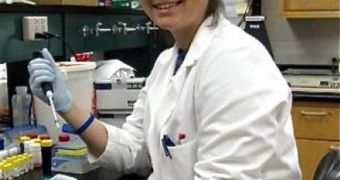The effects of bisphenol A, a chemical widely found in plastic products, have been debated ardently over the past few years, with strong arguments on both sides. And, since the US Food and Drug Administration (FDA) seems unable to take control of the issue and give a final verdict, researchers from the University of Illinois in Urbana-Champaign (UI), as well as other science groups around the country and the world, decided to take the matter into their own hands, and investigate the compound. In a recent study, UI experts determined that even low amounts of BPA adversely affected mice's reproductive cycle, a find that has potentially far-reaching implications for humans as well.
The discovery, which will be presented later this year at the Society for the Study of Reproduction annual meeting, also reveals that BPA impairs the growth and functions of adult reproductive cells in the rodents. In these animals, the unique antral follicle – a healthy, mature follicle – is responsible for producing steroid hormones, as well as for protecting a single egg located inside, among layers of protective cells and fluid, the leader of the new study, Jodi Flaws, a UI veterinary biosciences professor, explains. Assisting in the investigation was graduate student Jackye Peretz.
“These are the only follicles that are capable of ovulating and so if they don't grow properly they're not going to ovulate and there could be fertility issues. These follicles also make steroid hormones, and so if they don't grow properly you're not going to get proper amounts of these hormones,” the expert argues. In addition to being indispensable to reproduction, these hormones are “also required for healthy bones, a healthy heart and a healthy mood,” she adds. BPA is known to have a structure that is very similar to the steroid estradiol, but at this point it's not clear whether it acts on estrogen – with which estradiol regularly binds – in a way that mimics or enhances the activity of the former.
Answering this question is of paramount importance for our health, considering the fact that vast amounts of BPA are circulating in everything from plastic wrappings to bottles for infants. A 2003-2004 research conducted by the US Centers for Disease Control and Prevention (CDC) revealed the fact that 93 percent of the 2,517 people analyzed had traces of the compound in their urine, blood, or breast milk, as well as in other tissue and fluids, including the amniotic fluid of pregnant women. Under these circumstances, if the compound proves not to be harmless, the situation could grow desperate very soon.
“I think there's a need for more studies where people look in adult humans to see if BPA is affecting follicle growth and steroid hormone levels,” Flaws concludes.

 14 DAY TRIAL //
14 DAY TRIAL //